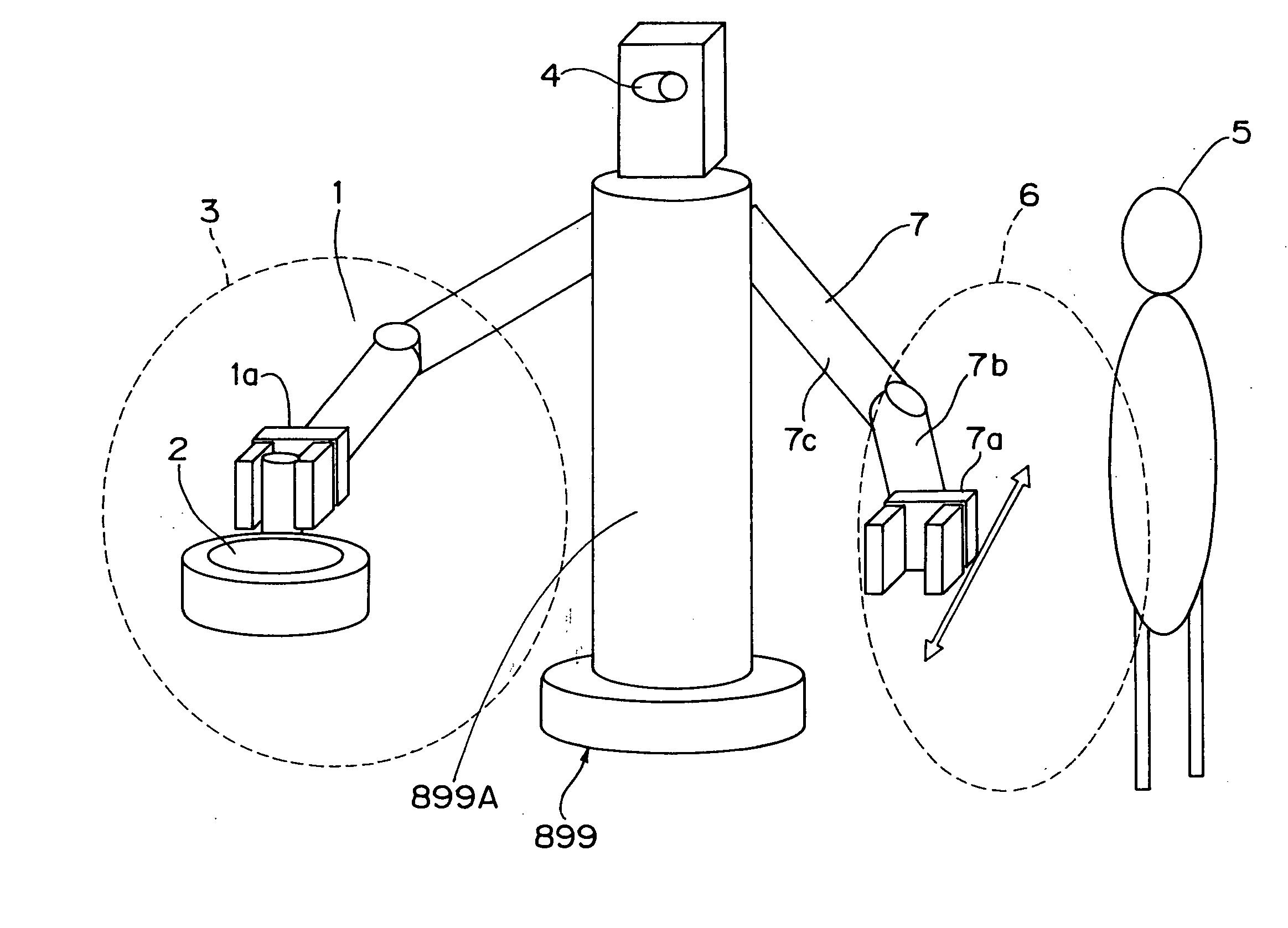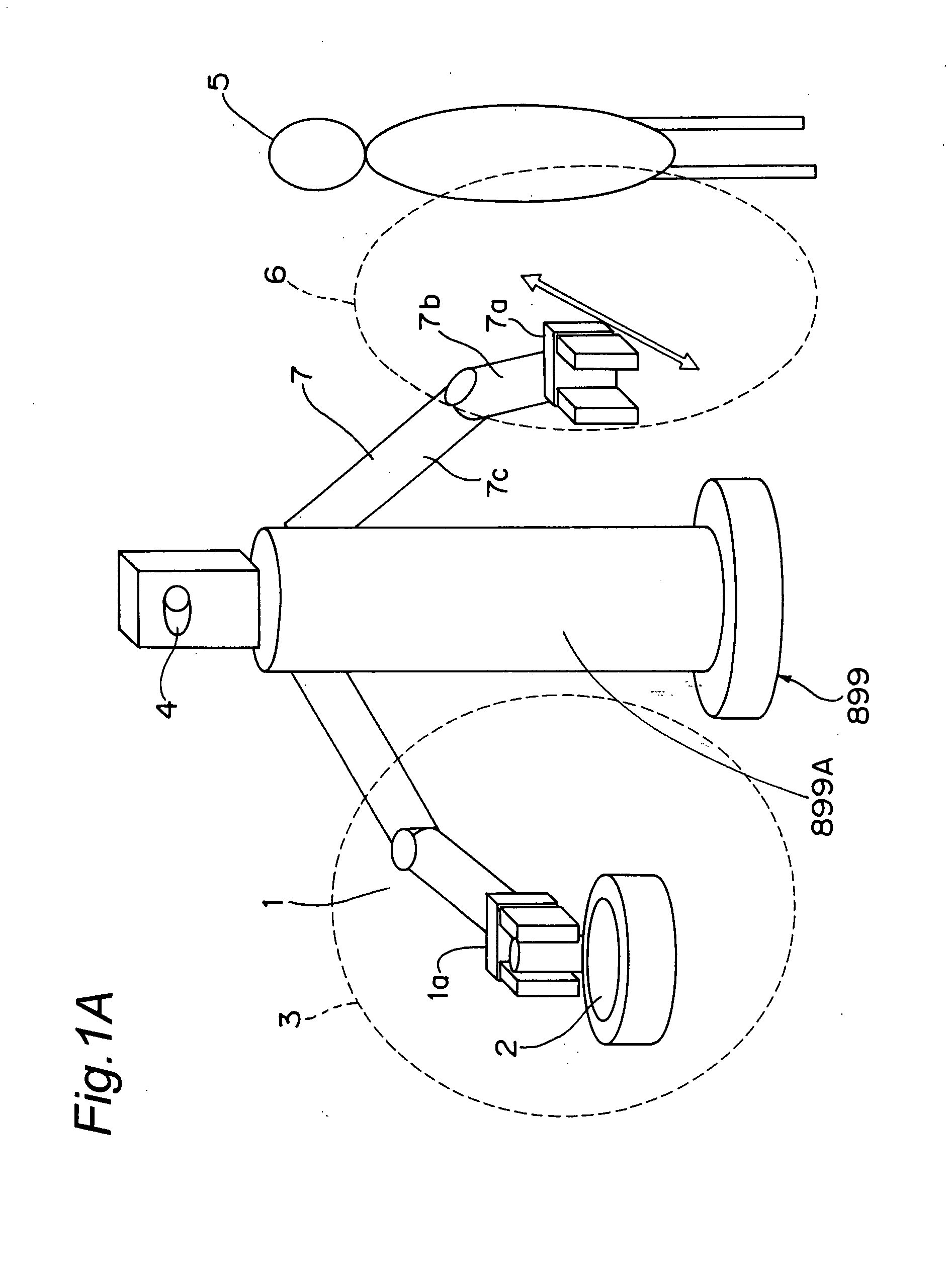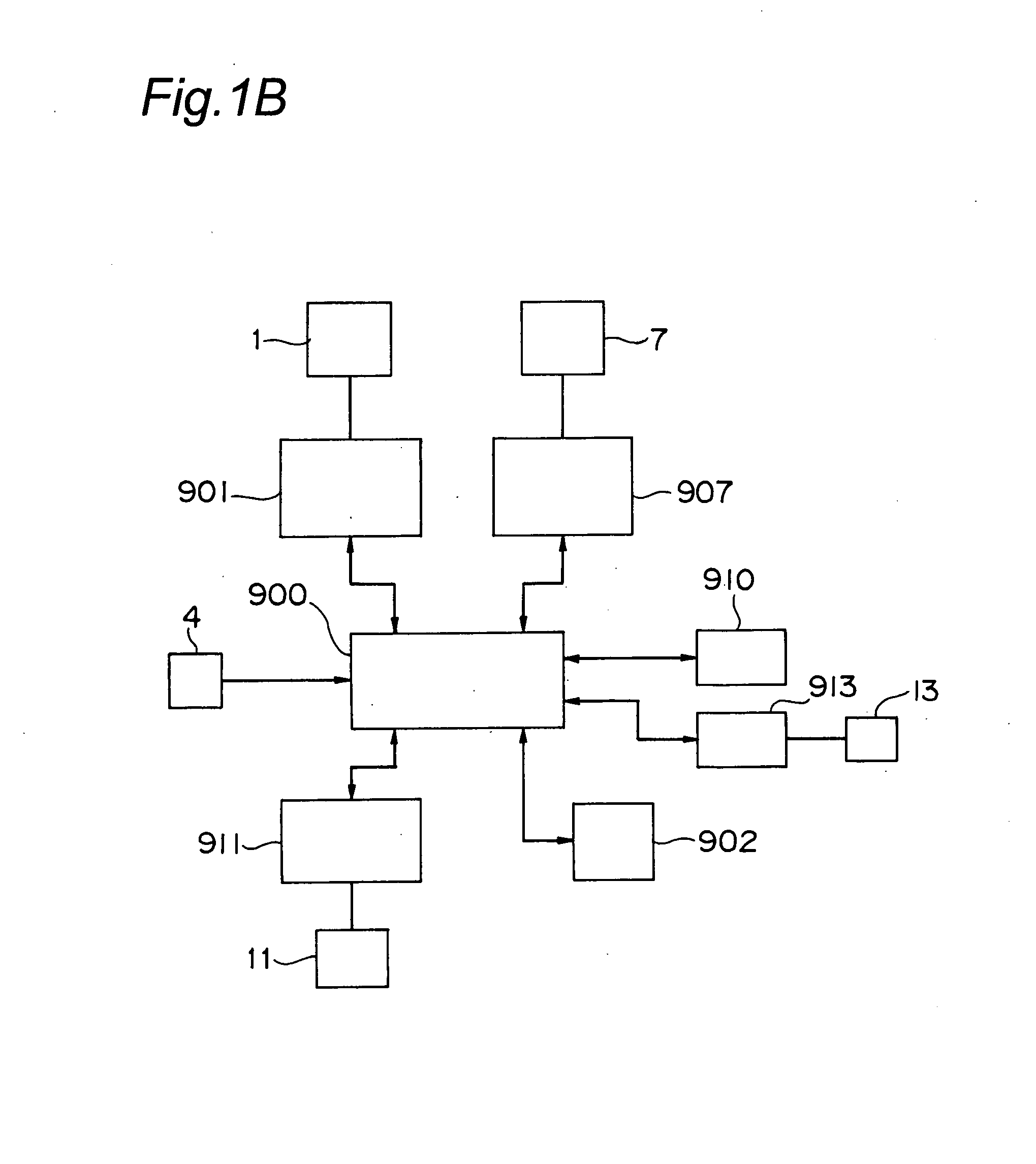Robot apparatus
a robot and apparatus technology, applied in the field of robot apparatus, can solve the problems of reducing operation efficiency, unable to completely separate the life environment into two, and prone to failure in operation,
- Summary
- Abstract
- Description
- Claims
- Application Information
AI Technical Summary
Benefits of technology
Problems solved by technology
Method used
Image
Examples
first embodiment
[0096]FIG. 1A and FIG. 1B are a schematic view of work and a block diagram of a robot apparatus in accordance with a first embodiment of the present invention.
[0097]In FIG. 1A and FIG. 1B, a robot arm, which carries out the work of the robot apparatus, is defined as a working robot arm 1. The robot apparatus is provided with: a robot mechanism unit 899 which is provided with a robot main body 899A having the working robot arm (first robot arm) 1, and a second robot arm 7 that is different from the first robot arm 1; a first robot arm driving unit 901 for driving the working robot arm 1; a second robot arm driving unit 907 for driving the second robot arm 7; a moving mechanism driving unit 911 that is installed in the robot mechanism unit 899, for driving a moving mechanism 11 used for moving the robot main body 899A; an object recognizing unit 4 for recognizing either one or two or more of the objects among three types of objects of a moving body, an animal, and a person; and a cont...
second embodiment
[0155]FIG. 13 is a schematic view of work of a robot apparatus in accordance with a second embodiment of the present invention. In FIG. 13, those constituent elements that are the same as those shown in FIGS. 1A to 11 are indicated by the same reference numerals, and the explanation and the like thereof are omitted.
[0156]In FIG. 13, the robot apparatus is provided with a moving mechanism 11 for moving a robot main body 899A of the robot mechanism unit 899. In the present second embodiment, an explanation will be given by exemplifying the moving mechanism 11 of a wheel type. This moving mechanism 11 is constituted by a casing 11A that is secured to the robot main body 899A of the robot mechanism unit 899, two pairs of wheels 12 supported onto the casing 11A so as to freely rotate thereon, and a moving mechanism driving unit 911 such as a motor or the like, for driving the two pairs of wheels 12 so as to rotate forwardly as well as reversely so that the moving mechanism 11 can carry o...
third embodiment
[0164]FIG. 14 is a schematic view of work of a robot apparatus in accordance with a third embodiment of the present invention. In FIG. 14, those constituent elements that are the same as those shown in FIGS. 1A to 13 are indicated by the same reference numerals, and the explanation thereof is omitted.
[0165]In FIG. 14, the robot apparatus is provided with the working robot arm 1 and a moving mechanism 11 for use in work, and in the same manner as the second embodiment, an explanation will be given by exemplifying the moving mechanism 11 of a wheel type. This moving mechanism 11 for use in work can be moved by four wheels 12 when driven by the moving mechanism driving unit 911 under the control of the control unit 900, and with respect to the contents of the job, the example thereof includes a job in which, while a frying pan 2, held by a hand 1a of the working robot arm 1, is being moved upward by the driving operation of the first robot arm driving unit 901 under the control of the ...
PUM
 Login to View More
Login to View More Abstract
Description
Claims
Application Information
 Login to View More
Login to View More - R&D
- Intellectual Property
- Life Sciences
- Materials
- Tech Scout
- Unparalleled Data Quality
- Higher Quality Content
- 60% Fewer Hallucinations
Browse by: Latest US Patents, China's latest patents, Technical Efficacy Thesaurus, Application Domain, Technology Topic, Popular Technical Reports.
© 2025 PatSnap. All rights reserved.Legal|Privacy policy|Modern Slavery Act Transparency Statement|Sitemap|About US| Contact US: help@patsnap.com



